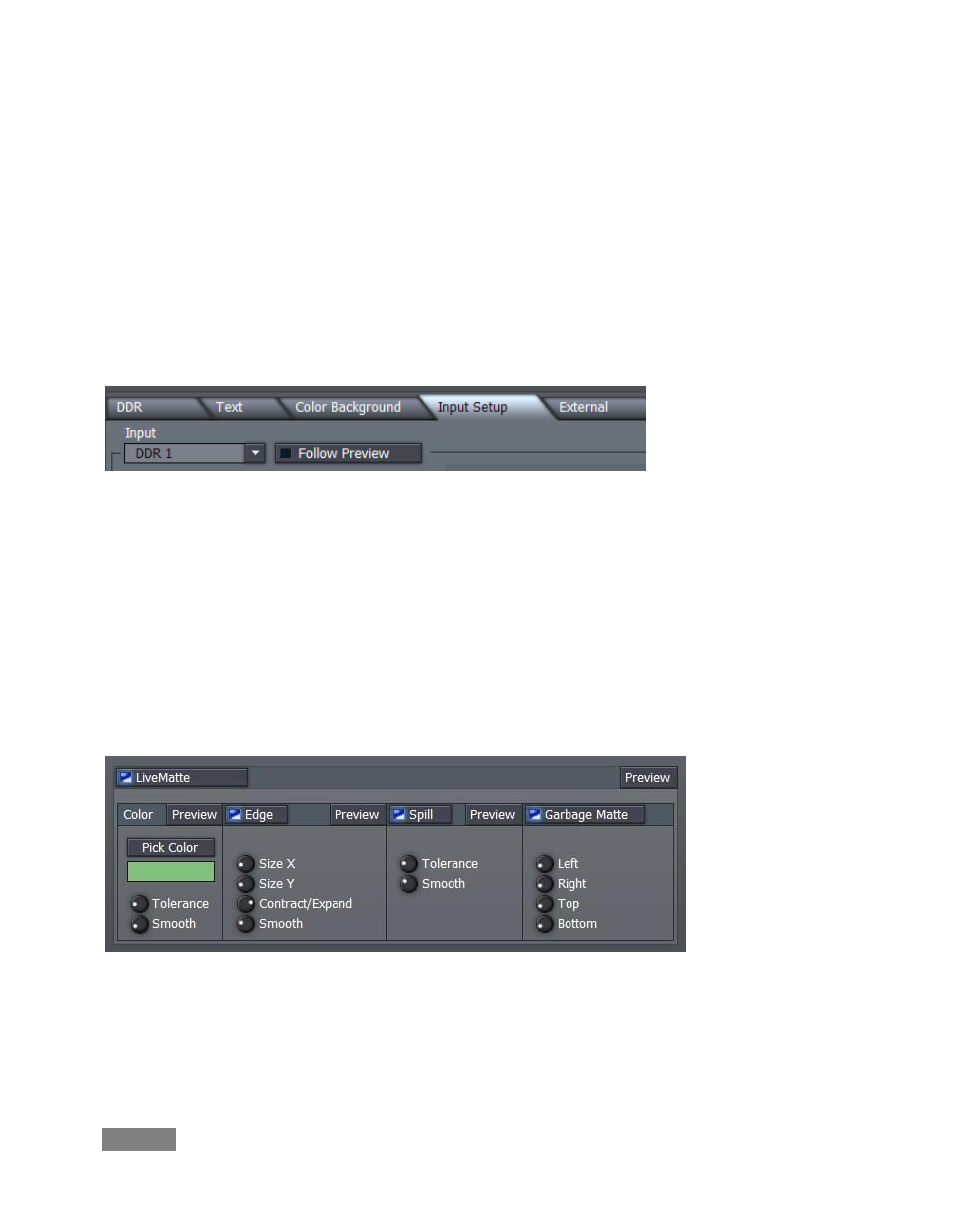NewTek TriCaster Studio User Manual
Page 96

Page | 76
For anything other than titling, chromakeying is the more common method in use today. When
keying in video and film, for example, the foreground footage is often shot in front of a blue or a
green screen. (When you see a television meteorologist in front of a weather map, that person is
actually standing in front of a blue or green backdrop. The colored background is chromakeyed
to expose the computer-generated background map.)
Basic LiveMatte effects are configured in a dedicated section of the Input Setup panel (several
extended LiveMatte options are presented using LiveSet controls, discussed in context a bit
later.)
Figure 73
First, you need to assign the source for the LiveMatte effect using the Input Setup panel’s drop-
down Input menu, whether a live camera input, a clip in a DDR, or even the display from another
computer on the network using iVGA.
When the Follow Preview switch is enabled (the default configuration,) the primary source for
the effect is the one selected on the Switcher’s Preview row. (This is useful as it allows you to set
up the effect out of view.) Of course you can disable this default, and use the menu to select any
suitable source.
Figure 74
The next thing to do is pick the “key color.” We’ll focus on chromakeying first as this is the
default LiveMatte operation (lumakey effects fall under the options available from the LiveSet
panel, discussed later.)